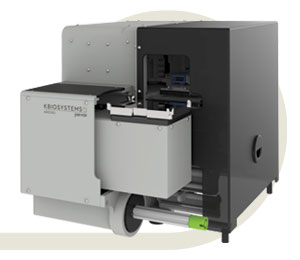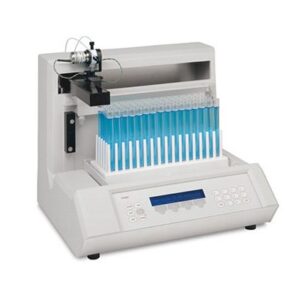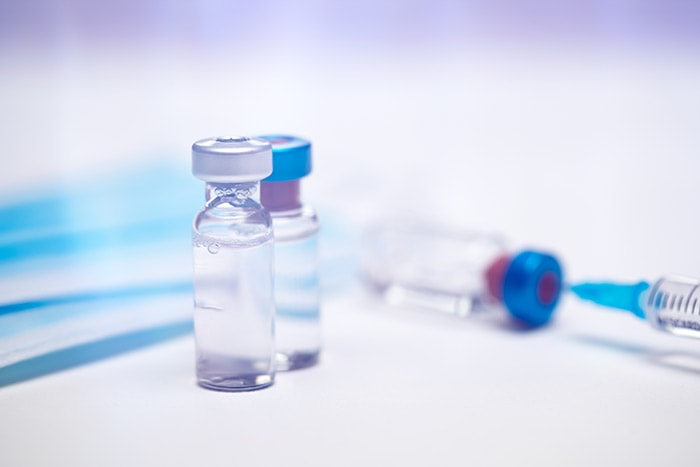POWERFUL TECHNOLOGY THAT IS FLEXIBLE, HIGHLY-SENSITIVE AND ACCESSIBLE

A powerful tool for discovery, development & manufacture
Gator’s next-gen BLI demonstrates higher sensitivity and more robust performance than the other commercial BLI products. It also supports wider range of applications, from drug discovery to therapeutics manufacturing.
High sensitivity, fluidic-free technology
Being fluidics free, BLI technology is resilient to complex matrices. Samples can be crude supernatants or cell lysates, as well as purified proteins. From small molecules to large biomolecules, Gator Bio BLI enables the detection, measurement and analysis of interactions across a wide molecular weight range.
Simple, rapid, high throughput measurements
Gator’s BLI instruments range from 4 – 32 channels and 1 – 4 microplate positions, providing diverse options for throughput and sample capacity. The user-friendly software enables simple and fast assay setup, acquiring rapid and data-rich measurements. Many biosensor chemistries can be reused to save on cost per assay.
DOWNLOAD BROCHURES FOR MORE INFORMATION
Next-Gen BLI Technology
Gator label-free analysis
The Gator family

Technology
Powerful biolayer interferometry technology
Biolayer interferometry (BLI) is a label-free biomolecular detection method created by the founders of Gator Bio. In BLI, biomolecular interactions are detected by measuring the interference pattern of white light reflected from the surface of a biosensor.
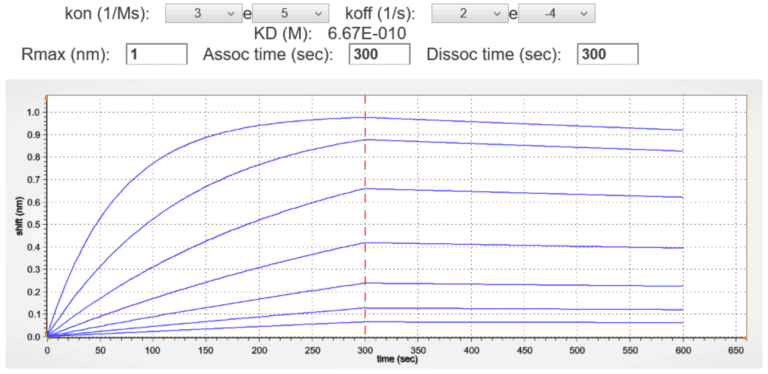

Gator Bio biosensors combine a 1mm diameter glass rod with patented optical layers and specialised surface chemistry built at the distal end of the biosensor. BLI compares the interference pattern of white light reflected from an internal reference layer within a layer of immobilised biomolecules on the surface chemistry of the biosensor. Shifts in interference due to the accumulation of biomolecules are monitored in real-time to sensitively analyse and calculate rates of association and dissociation among target proteins with high precision. Only the interactions of bound biomolecules are measured, making BLI a powerful tool for a wide range of applications.
Unlike more cumbersome methods of measurement, BLI uses reusable biosensors that dip into the well to measure. With no complicated fluidics to maintain, Gator’s BLI systems are very robust and maintenance-free.

APPLICATIONS
Gator’s BLI systems enable real-time measurements to support the analysis of biological molecules at different stages of therapeutic development. This includes off-rate screening, titre measurements, binding constant determination, yes/no binding to target antigens, affinity maturation and epitope binning.
With a wide range of precoated biosensors and methods to create custom-made biosensors, Gator BLI can fit into most biopharmaceutical pipelines and academic laboratories. From characterising antibodies to developing gene therapy delivery vehicles such as AAVs, Gator Bio has developed total solutions to expedite your product development.
Drug discovery
- Biotherapeutics
- Gene therapy
- Drug discovery & development
- Life science research
Rapid quantitation
Gator BLI can perform rapid quantitation experiments. All that is needed is a standard curve of known concentrations, which can be saved and reused in future experiments.
On the Gator Pro, quantitation can be performed on 32 samples simultaneously in just 2 minutes; an entire 384-well plate of samples can be measured in as little as 32 minutes.
Easy kinetic characterisation
From pM to mM, Gator Bio BLI offers a simple way to do kinetic measurements. Since Gator BLI displays real-time data, the datasets created enable users to calculate binding kinetics (on-rate and off-rate) and affinity values (dissociation constant).
High-quality, rich data sets reveal information about affinity. Gator BLI is compatible with a wide range of biomolecules for kinetic investigations: antibodies, nanobodies, small molecules, membrane proteins, AAV, nucleic acids, and more. BLI is a mainstay for the label-free measurement of biomolecular interactions.
Epitope binning assays
Knowing the epitope of an antibody is crucial to understanding its biology and therapeutic potential. Running epitope binning analysis earlier in the drug discovery pipeline can save time and increase efficiency. Gator BLI can handle crude supernatants to allow epitope binning at the earliest drug discovery phase. Intellectual property rights can be known earlier to make sure you stand out among competitors.
Epitope binning shouldn’t be hard to set up or analyse. With Gator BLI, assay templates are pre-built to run, and data analysis takes just one click. Whether you’re running the sandwich or tandem format, Gator can be used to screen your antibodies. Real-time and fluidics-free, Gator systems enable rapid epitope binning without the difficulties of other label-free methods.
APPLICATION notes

SYSTEMS
Gator® Pilot
Entry-level automated BLI, an ideal choice for low throughput analysis
The Gator® Pilot instrument is designed for low-throughput analysis. Each channel has a dedicated spectrometer to enable high frequency parallel measurement of up to 4 samples. Gator® Pilot upholds the same high performance and high-quality results as the rest of Gator’s next-gen BLI instrument range.

Gator® Prime
Automated next-gen BLI system for label-free analysis
Gator Prime
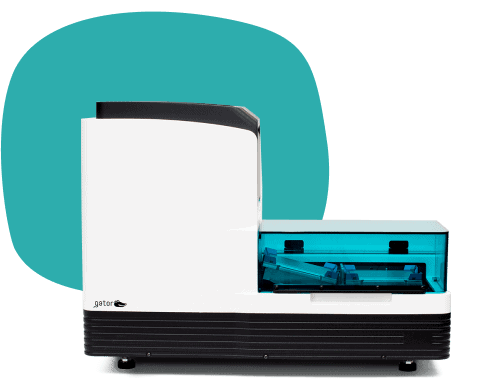
Gator® Plus
Medium-throughput BLI system with higher sample capacity
Gator Plus

Gator® Pivot
High-throughput BLI system with innovative design for protein analysis
The Gator® Pivot instrument is designed for intermediate-throughput analysis. 16 spectrometers enable high frequency parallel measurement of up to 16 samples. It is also equipped with temperature and evaporation control that alleviates concerns about analysing thermally unstable proteins and the risk of sample evaporation during extended runs.

Gator® Pro
Highest throughput system supercharging BLI
The Gator® Pro is designed for fast, automated, high-throughput analysis with 32 spectrometers enabling high frequency parallel measurement of up to 32 samples. 3 sample plates enable automated data acquisition of 1152 samples per batch. Perform an entire 32 x 32 EP assay in a single run in less than 8 hours and report a full 96 x 96 EP assay in 5 days.
Gator Pro


Specifications
| Gator models | Pilot | Prime | Plus | Pivot | Pro |
|---|---|---|---|---|---|
| Parallel sample measurements | Up to 4 samples | Up to 8 samples | Up to 16 samples | Up to 32 samples | |
| Maximum sample capacity | 40 | 168 | 456 | 816 | 1152 |
| Epitope binning capacity | 6 x 6 | 12 x 12 | 16 x 16 | 20 x 20 | 32 x 32 |
| Microplate sample formats | 96-well, flat-bottom | 96-well, flat- & tilt-bottom | 96- & 384-well, flat- & tilt-bottom | ||
| Minimum sample volume | 180 µL | 130 µL | 40 µL | 40 µL | 40 µL |
| Limits of detection | > 150 Da molecular weight, 10 pM – 1 mM affinity (KD), 0.02 – 2,000 µg/mL quantitation linear range (Protein A) | ||||
| Sample Types | Proteins, antibodies, peptides, nucleic acids, liposomes, viruses, small molecules | ||||
| Applications | Yes/no binding, quantitation, kinetics, affinity, off-rate ranking, epitope binning | ||||













